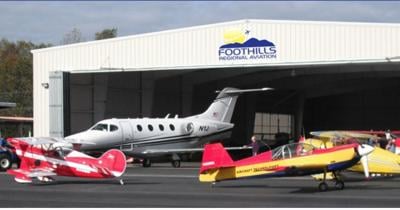Bolick told the Foothills Regional Airport Authority last month that the environmental and feasibility studies, funded by a $50,000 Golden LEAF Foundation grant, mark a key milestone toward preparing the airport for large-scale industrial use.
“Those studies let us understand exactly what we have,” Bolick said in a later interview. “Wetlands, endangered species, the things potential industrial partners look for when planning development.”
The assessment, conducted by Sanford Holshouser Economic Development Consulting, found no need for a Phase 2 environmental review.
According to Bolick, this is part of a checklist as the airport applies to become a Certified Site through the North Carolina Department of Commerce.
That designation, Bolick explained, would make Foothills Airport one of a select few properties in western North Carolina considered “shovel-ready” for major industrial partners.
“Certified Sites get first preference when a major industrial partner comes to the state,” she said.
If Foothills Airport were chosen by N.C. Commerce, the airport property could qualify for more grant funding or larger Golden LEAF awards, potentially up to $1.5 million to continue developing the site’s infrastructure.
One of the bigger infrastructure needs identified so far is sewer access. Bolick said a project is being explored to extend roughly a 6-mile sewer line from Lenoir to the airport, costing in the ballpark of $6 million.
Before that or other future projects are completed, a feasibility study will be completed to outline the airport’s economic potential, including cost-benefit modeling for job creation and tax revenue across Caldwell County, Burke County, and the City of Lenoir. Results from the study are expected in early 2026.
Foothills Regional Airport is jointly owned by Burke County, Caldwell County, Morganton, and Lenoir, a partnership Bolick calls “a success story in itself.” She described the property as “hundreds of acres of untouched, commercially zoned land,” backed by four local governments that see the airport as a shared engine for growth.
Also at its September meeting, Airport Engineer Pat Turney told the authority board that site preparation for a new T-hangar complex is about 75% through contract time, with paving expected this month.
Assistant Airport Manager Derek Brown said overall storage at the airport remains tight, with occupancy hovering around 96%.
He shared that year-to-date aviation fuel sales were down slightly — 3% for AvGas and 8% for Jet-A, but noted last year was the airport’s highest Jet-A sales year on record.
The airport’s progress aligns with broader statewide efforts to attract aerospace and advanced manufacturing employers.
According to the N.C. Department of Transportation, aviation contributes nearly $88 billion annually to the state’s economy and supports more than 427,000 jobs.
The Economic Development Partnership of North Carolina lists more than 300 aerospace manufacturers in the state, numbers that continue to grow.
And even Gov. Josh Stein emphasized workforce development in aerospace fields by celebrating the opening of a new aviation center at Guilford Technical Community College on Oct 15.
The N.C. Department of Commerce’s First in Talent strategy and Appalachian Regional Commission investments have identified Western North Carolina as a priority region for new development, citing lower land costs, access to interstate corridors, and a strong workforce ready to diversify beyond traditional furniture and textile manufacturing.
Bolick said Foothills Airport fits that story perfectly. “The people in this region have always been known to be hard workers building things of quality,” she said. “There’s pride here in making something that lasts.”
The airport’s strategic importance for the region was paramount as it served as a major hub for emergency services and state agencies responding to Hurricane Helene’s impact across the foothills last fall. Bolick said that visibility reaffirmed to state leaders how valuable the site could be for logistics and the aviation-based industry.
The final results of the feasibility study are expected by February 2026, after which the airport authority and county partners will decide on the next steps for infrastructure.
Nathanael Eure is a staff writer with The Paper. He may be reached at 828-445-8595 or nathanael@thepaper.media.


